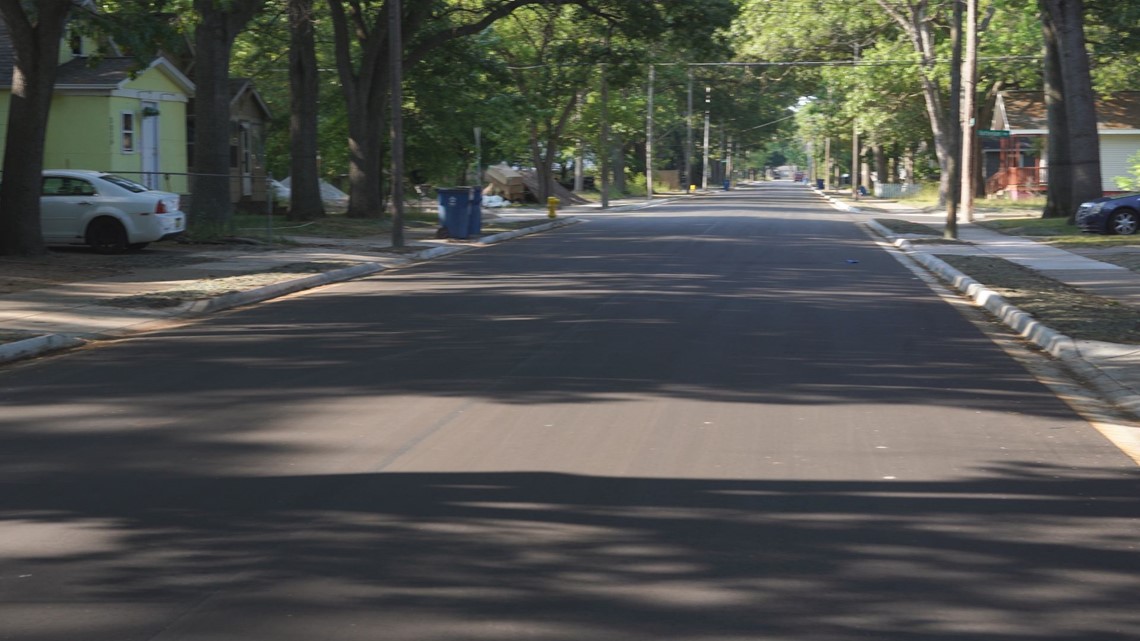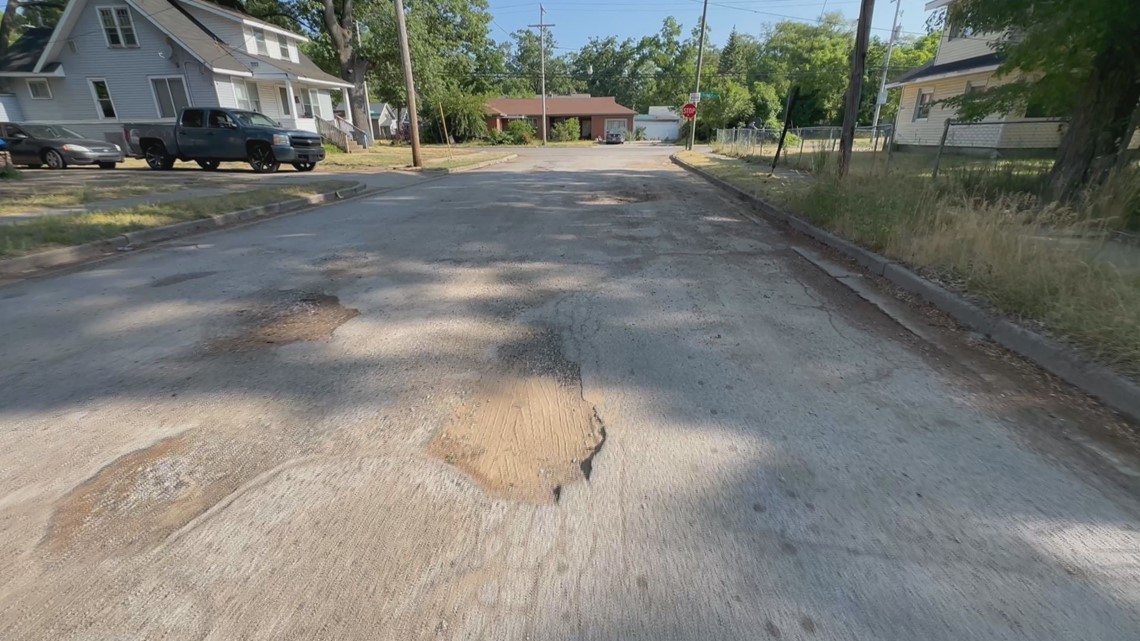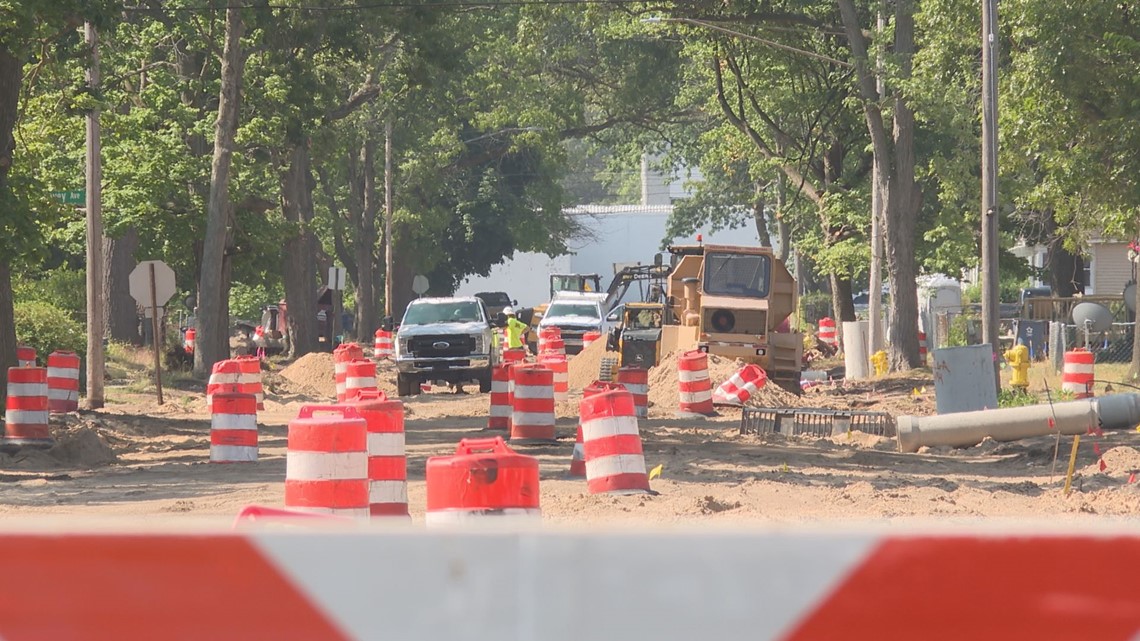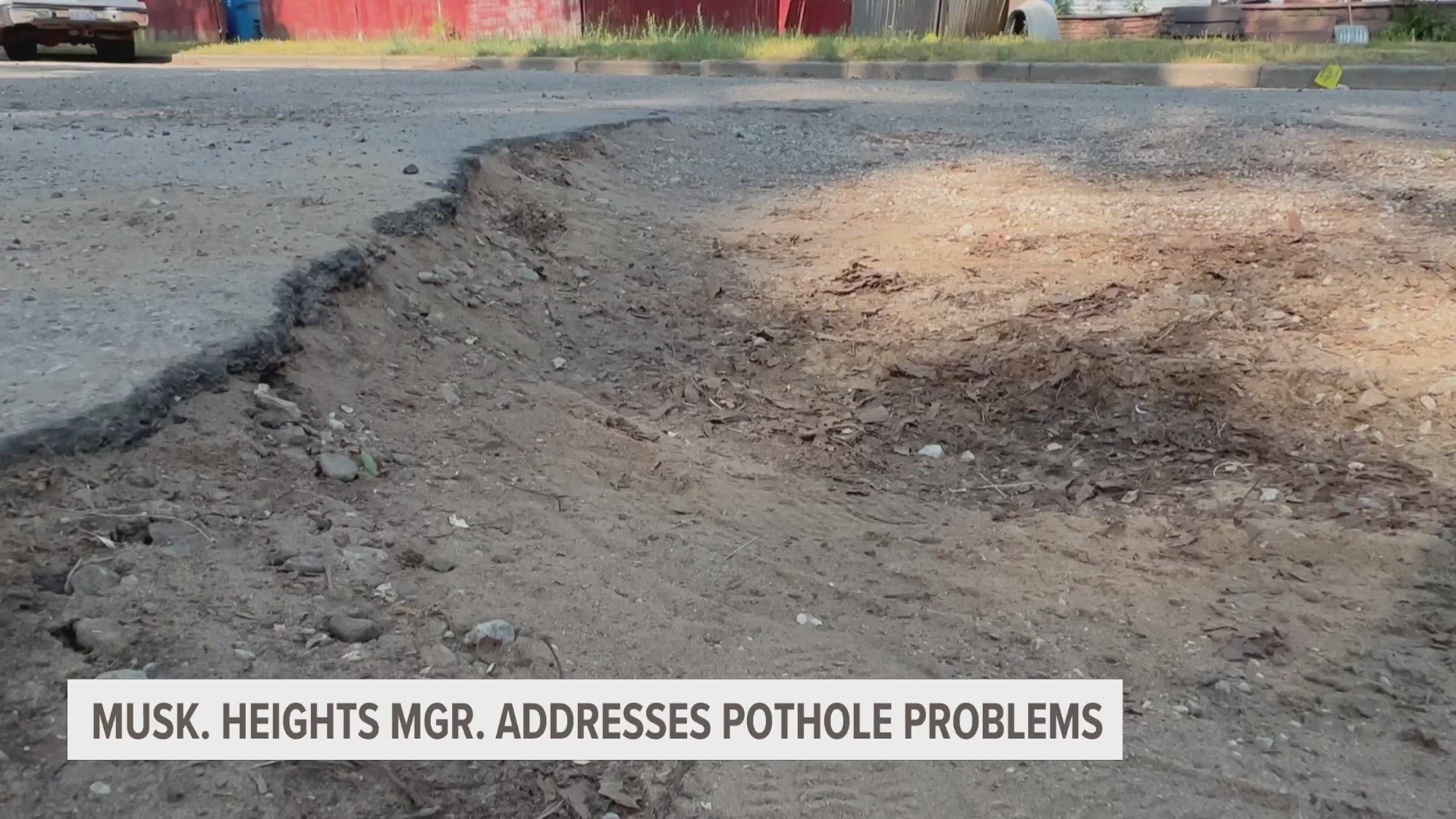MUSKEGON HEIGHTS, Mich. — With residents continuing to struggle to navigate through deteriorating roadways, the Muskegon Heights interim city manager fielded several questions surrounding their seemingly never-ending pothole problem.
The almost 30-minute interview began with Melvin Burns agreeing that Muskegon Heights does have a problem – with the caveat that it’s not an issue unique to Midwestern cities.
Burns also agreed that the city has the responsibility to keep its roads properly maintained.
We asked about the challenges the city faces.
“First of all, you're talking about a city that's over 100 years old,” he said. “Everybody knows about declining tax base, things that have happened over the last 40, 50 years with industries moving out and taxpayers moving out – we're a city that one time was almost 2,000 residents. Now we're just under 10,000. So put all those factors together, and the one thing that you need to repair roads is tax dollars. We certainly have much lot fewer of those than we've had in the past.
“In terms of the roads, if you look at our budget, the bottom lines of our budget – we don't end the year with a big surplus. And so the same general fund dollars that pay for police and fire are also the same ones you invest in roads.”
Burns goes on to say that local street improvements are some of the hardest projects to fund and are generally done through grants or low-cost loans. Examples he provided include the Clean Water State Revolving Fund and the Drinking Water Revolving Loan Fund.
With winter weather now gone, the city has been making some progress, albeit in a slow, methodical way. Burns said that’s because under-the-road infrastructure needs to be addressed, too.
“With every road, you can't just think ‘potholes,’ you also got to think, ‘What's the sewer condition? What's the condition of the sewer mains and water mains, water supply line?’ You got to think, comprehensively. (You can’t just go,) ‘Hey, let's go out and fix those roads now,’ which, if you had a pile of money you’d run and do, but there's other issues we have to consider at the same time.”
As a result, Burns said the city’s response is different from what most might expect.
“People often think you take the worst streets, and you start with those first, and that's not always the way that strategy works,” he said. “Some streets are so far gone that you'd have to do like a total rebuild, so with limited dollars, you may say, well, let's deal with the streets we can save first and extend their life 10, 15 years and then as more dollars come available, we get to the ones that we know we've got to invest way more dollars.”
The priority to less-battered streets leads the ones that would be considered “beyond saving” to instead be patched. Burns said its something that happens during winter and summer – though it’s most effective when it’s warmer. The response is a short-term solution, but some residents believe it doesn’t happen quick enough – with some community members filling the holes themselves.
“It's not going fast enough for residents, of course, but it's not that everybody's sitting doing nothing,” he said. “The people thing people want to know is: Are people hearing us? Is something being done? To that, we can say yes.”
So, what work is being done?
Burns outlines several projects in the works:
- 7th and 8th streets are part of an extensive, $3.6 million project that includes water main improvements.
8th Street was completed in June.


“This is amazing, man,” said 8th Street resident Todd Dowell. “I am so happy. I've been over here in this area since 2007. And I love it. And the Heights is going to get back right though – it just takes time.”
Work on 7th Street is slated to begin in July.


- A stretch of Leahy Street – from Sherman Boulevard to Barney Avenue – is currently being worked on. The improvement is part of $2.9 million project. This also includes water main work.


- As previously reported, work on Reynolds Street has been completed.
- Burns said there are also plans for Hackley Avenue that is scheduled to start in the fall or spring.
- The city has also applied for a state grant that would allow work on Hoyt Street, but that process can take anywhere from 6 to 9 months, Burns said.
Despite the progress, some residents are still skeptical.
Last year, residents from the Heights held a protest in front of city hall, with questions like “Where are the receipts?” on full display. That sense of distrust is still apparent.
“They’ve (got) money up there, actually.” Dowell later said. “Me ,myself – I don't know what they’re doing with the money, but I'm just glad they got to my street. Hackley and Summit right here – those main streets need to be done. Really, they do. And a lot more the side streets, too.”
Marie Bradford, a resident of 7th Street echoes the community’s pothole patching isn’t enough, even after hearing Burns’ response about a tight budget.
“Mona Shores is going somewhere, improving. Muskegon is going somewhere, improving. Heights is the only one that's not going anywhere,” Bradford said. “There's a lot of people that are out here who are paying their taxes –where is that tax money going? Be fair to everybody That money is somewhere. Fix these road… Everything they write grants for? Nothing happened from it.”
Despite that pushback, Burns believes the city of Muskegon Heights is heading in a good direction.
"With my limited three-month view, I think we have a lot of momentum for a lot of projects being done," he said "You know, it doesn't look sexy to say we fixed a water main, but what that does in the long term is it cuts out where we may have leaks in the system. Replacing lead supply lines, we all know the risk of those so they don't look sexy. They don't look to make fancy ribbon cuttings, but they're important. Fixing infrastructure doesn't look sexy. But man is it so vital."
►Make it easy to keep up to date with more stories like this. Download the 13 ON YOUR SIDE app now.
Have a news tip? Email news@13onyourside.com, visit our Facebook page or Twitter. Subscribe to our YouTube channel.

